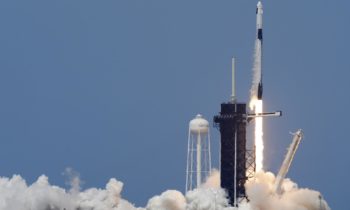
Analysts at the University of Chicago (UChicago) have as of late announced a test perception of an issue field with warm variances that is as per Unruh’s radiation expectations. Their paper, distributed in Nature Physics, could open up new conceivable outcomes for research investigating the elements of quantum frameworks in a bended spacetime.
“Our group at UChicago has been exploring another quantum wonders considered Bose firecrackers that we found two years prior,” Cheng Chin, one of the scientists who completed the investigation, told Phys.org. “Our paper reports its shrouded association with a gravitational wonder called Unruh radiation.”
The Unruh impact, or Unruh radiation, is firmly associated with Hawking radiation. In 1974, hypothetical physicist Stephen Hawking anticipated that the solid gravitational power close dark openings prompts the emanation of a warm radiation of particles, which looks like the warmth wave transmitted by a broiler. This wonder stays theoretical with no direct trial affirmation.
A couple of years after the fact, in 1976, physicist William Unruh estimated that an individual could watch a similar radiation when she is moving with a high quickening. The proportionality among Hawking and Unruh radiation depends on Einstein’s identicalness guideline, which has now been affirmed by numerous trials.
In spite of Unruh’s forecasts, nobody has yet watched Unruh radiation, which isn’t amazing, as this wonder is especially hard to catch. Truth be told, an individual would need to persevere through a G-power of 25 billion (25*1018) to see a feeble radiation of 1 Kelvin. This is an astonishing number when thinking about that, for example, the G-power experienced by a contender fly pilot is close to 10.
“Our team at UChicago has been investigating a new quantum phenomena called Bose fireworks that we discovered two years ago,” Cheng Chin, one of the researchers who carried out the study, told Phys.org. “Our paper reports its hidden connection to a gravitational phenomenon called Unruh radiation.”
In their analysis, Chin and his partners arranged 60,000 cesium molecules and cooled them to around 10 nano-Kelvin, at that point began the regulation of the attractive field. A couple of milliseconds after the balance, they watched a warm outflow of particles every which way. To affirm the warm dissemination of particles, the scientists gathered a bigger number of tests and demonstrated that the molecule number changes decisively as indicated by the warm Boltzmann circulation.
“The temperatures we extracted from the images agree excellently with Unruh’s prediction,” Chin said. “In addition to the thermal distribution, we also observe the spatial and temporal coherence of the matter wave emission. The coherence is the hallmark of quantum mechanics and reveals that Unruh radiation originates from quantum mechanics. This is in sharp contrast to classical thermal radiation sources, like an oven or sunlight, which come from thermal equilibrium.”
Basically, Chin and his associates watched an issue wave field utilizing a structure for quantum material science reenactments in non-inertial edges. They saw that this issue wave’s changes, just as long-go stage soundness and its transient intelligibility are lined up with Unruh’s expectations.
The examination completed by the group at UChicago was subsidized by the National Science Foundation, Army Research Office and Chicago MRSEC. Later on, their perceptions could have significant ramifications for the investigation of quantum wonders in a bended spacetime.
“Our method applies to generic quantum states in non-inertial reference frames. In our future work, we wish to identify novel quantum phenomena in curved spacetimes,” Chin said. “There has been much discussion whether Einstein’s general relativity is compatible with quantum mechanics. There are proposals, speculations and even paradox, and we wish to carry out experiments that can help to better understand how quantum mechanics works in curved spacetimes.”
Disclaimer: The views, suggestions, and opinions expressed here are the sole responsibility of the experts. No Opinion Bulletin journalist was involved in the writing and production of this article.



